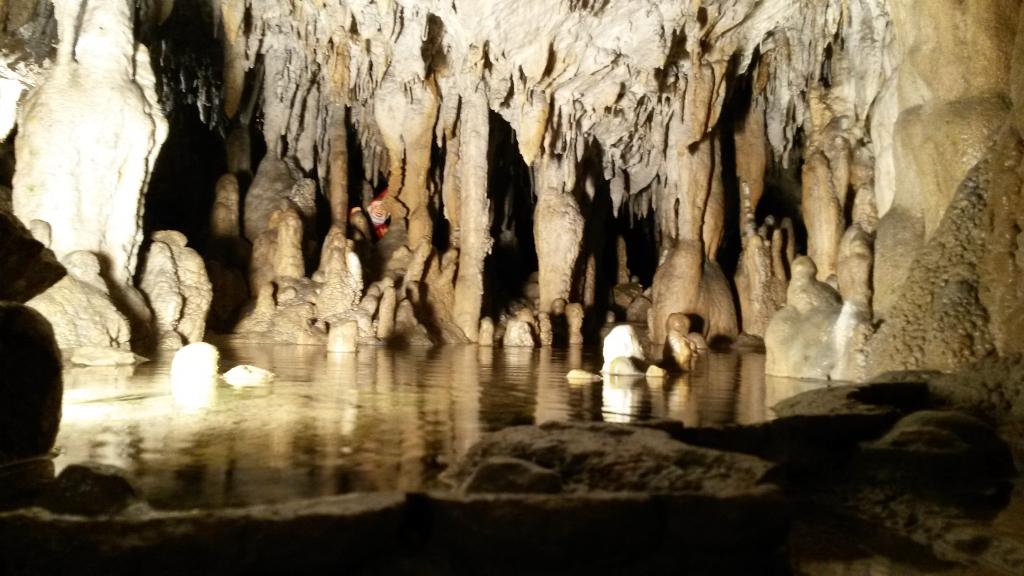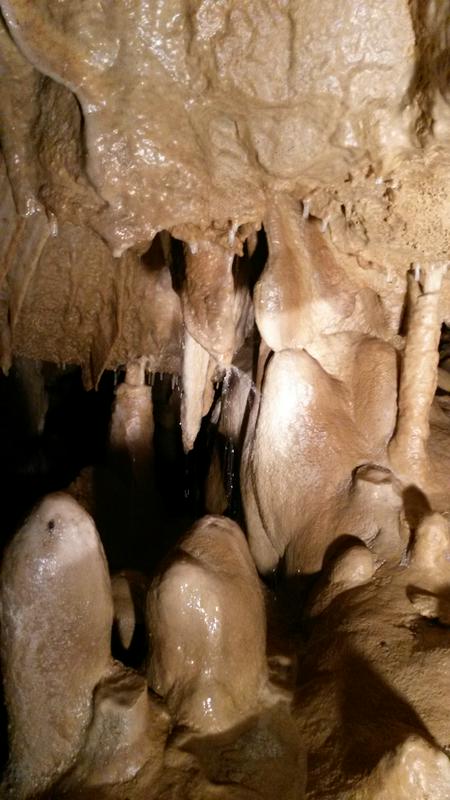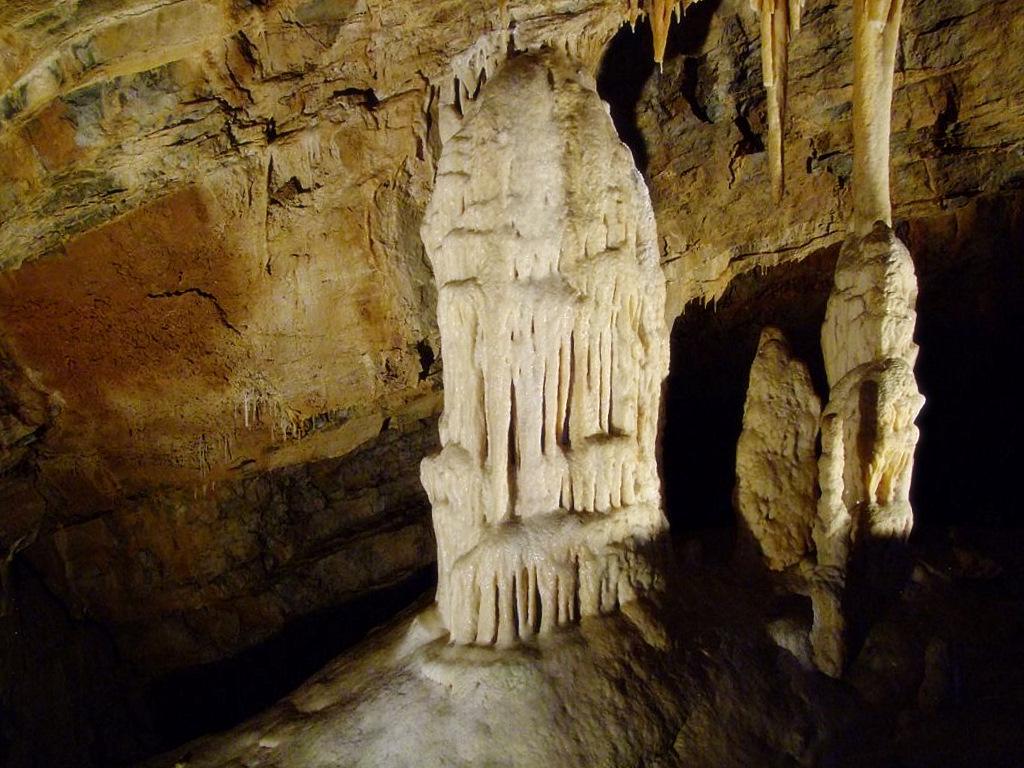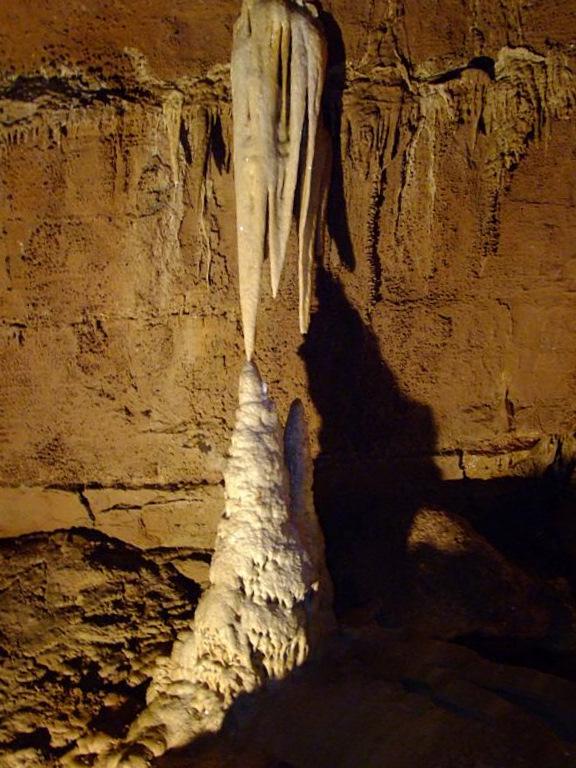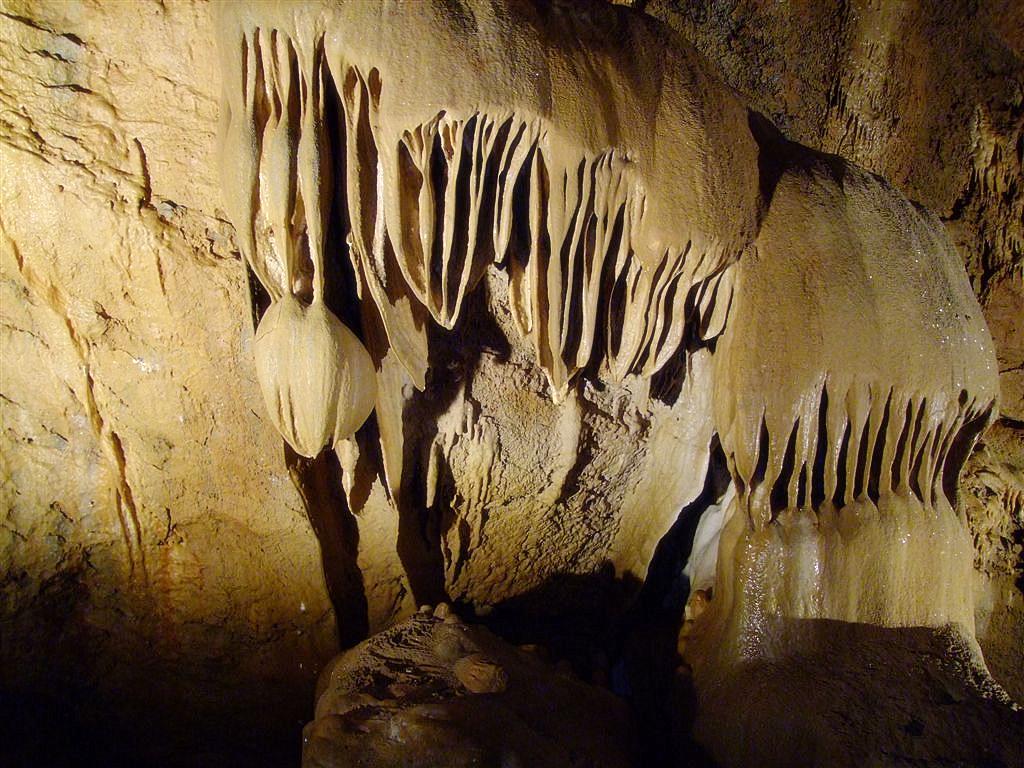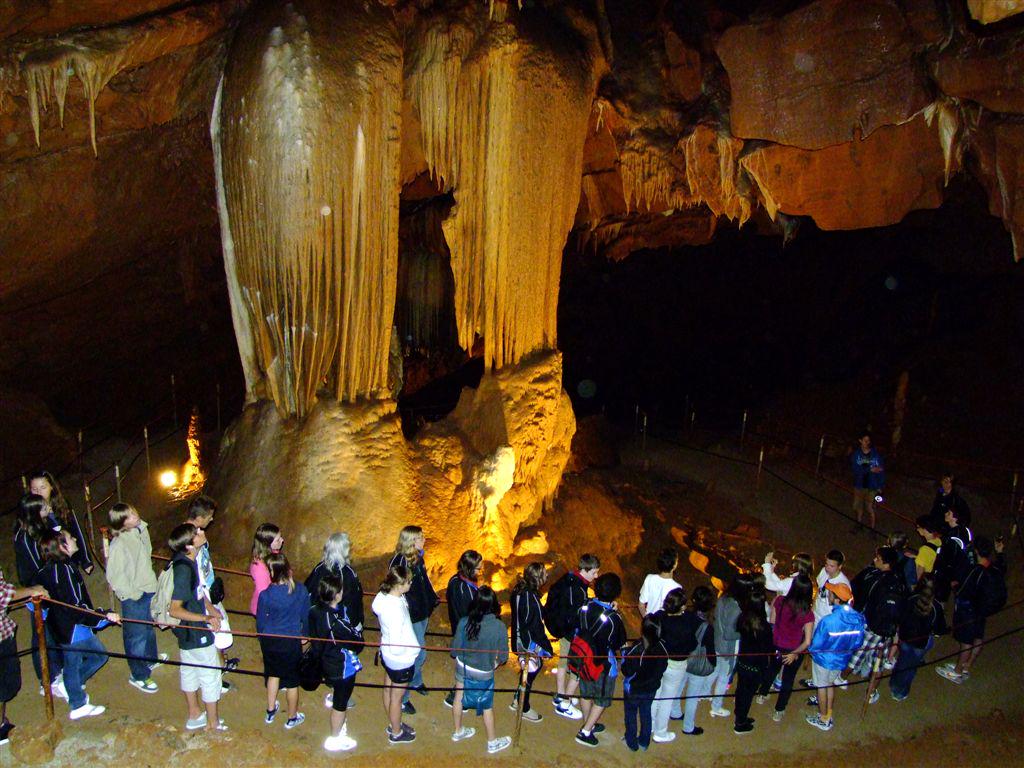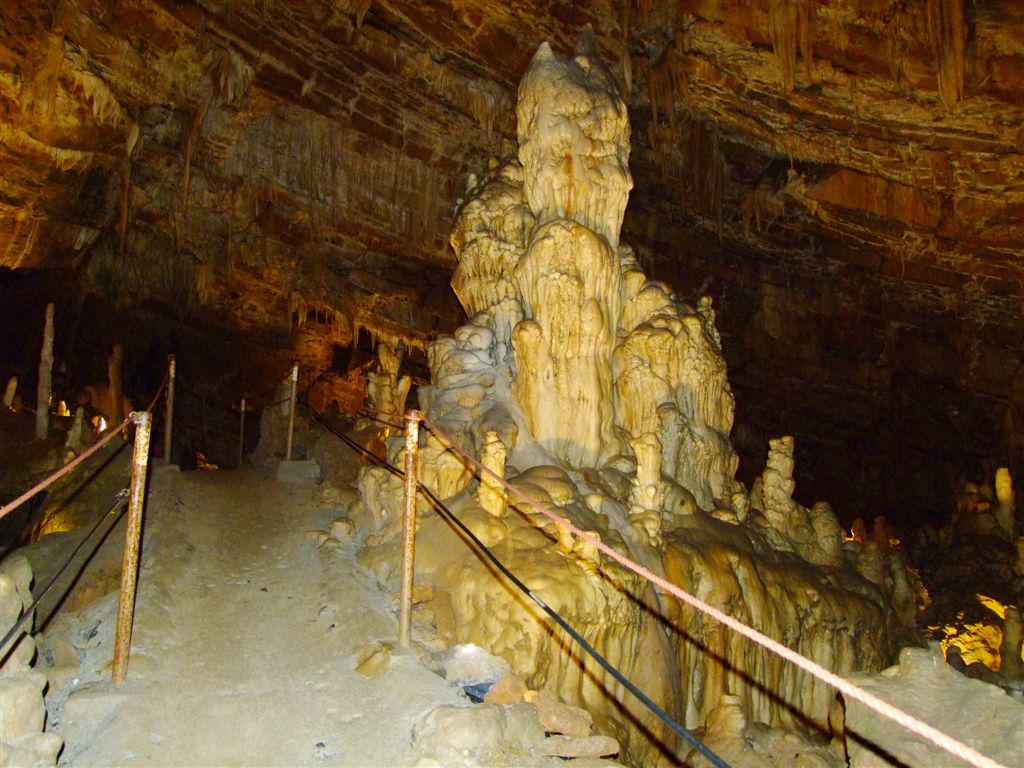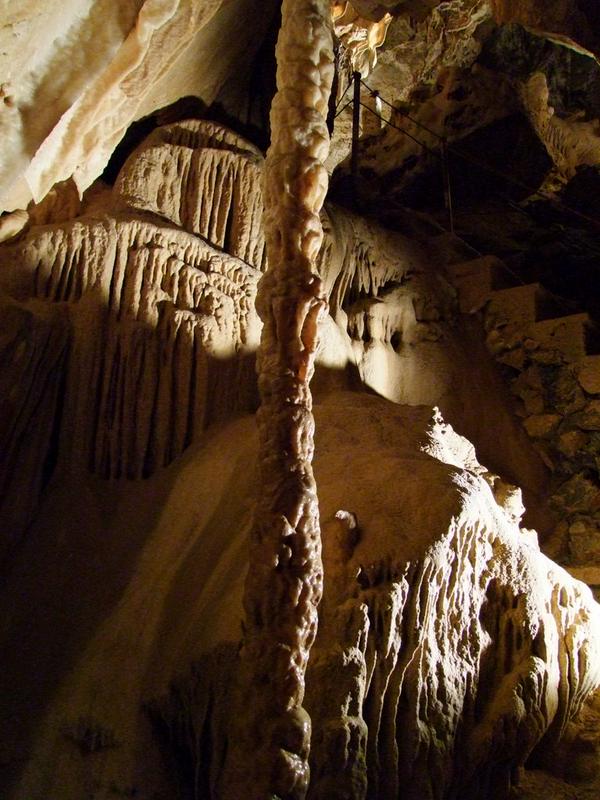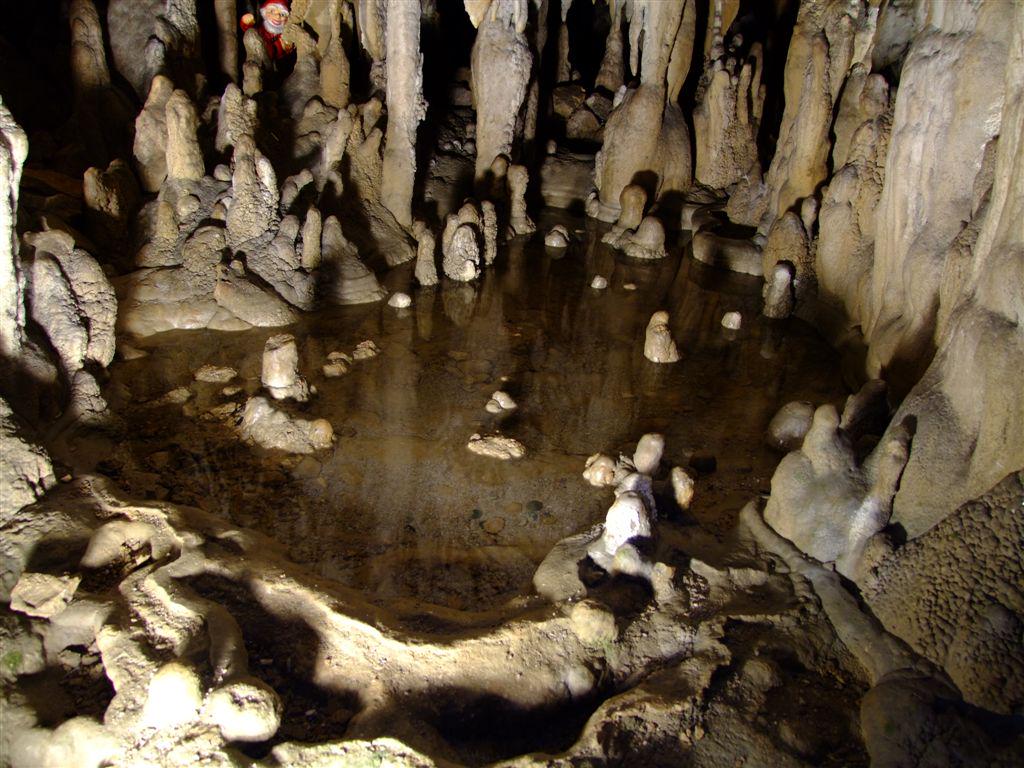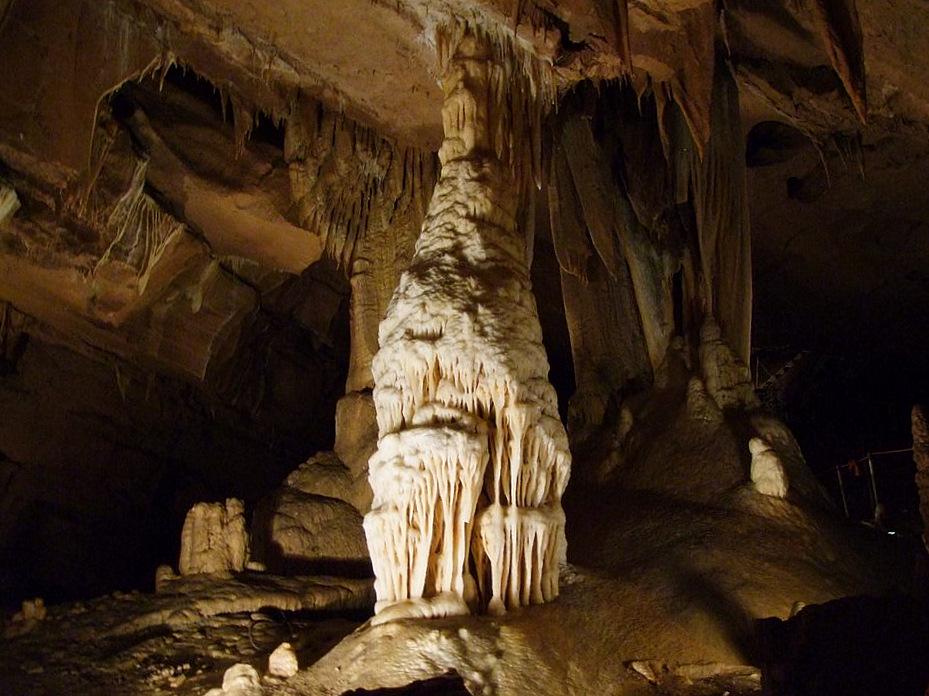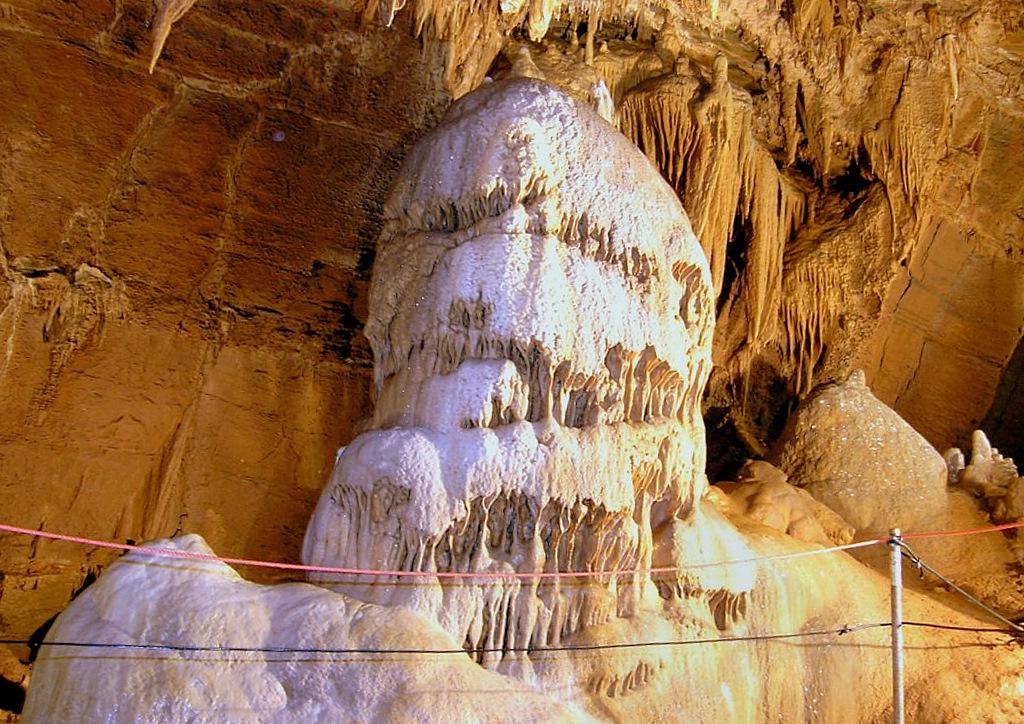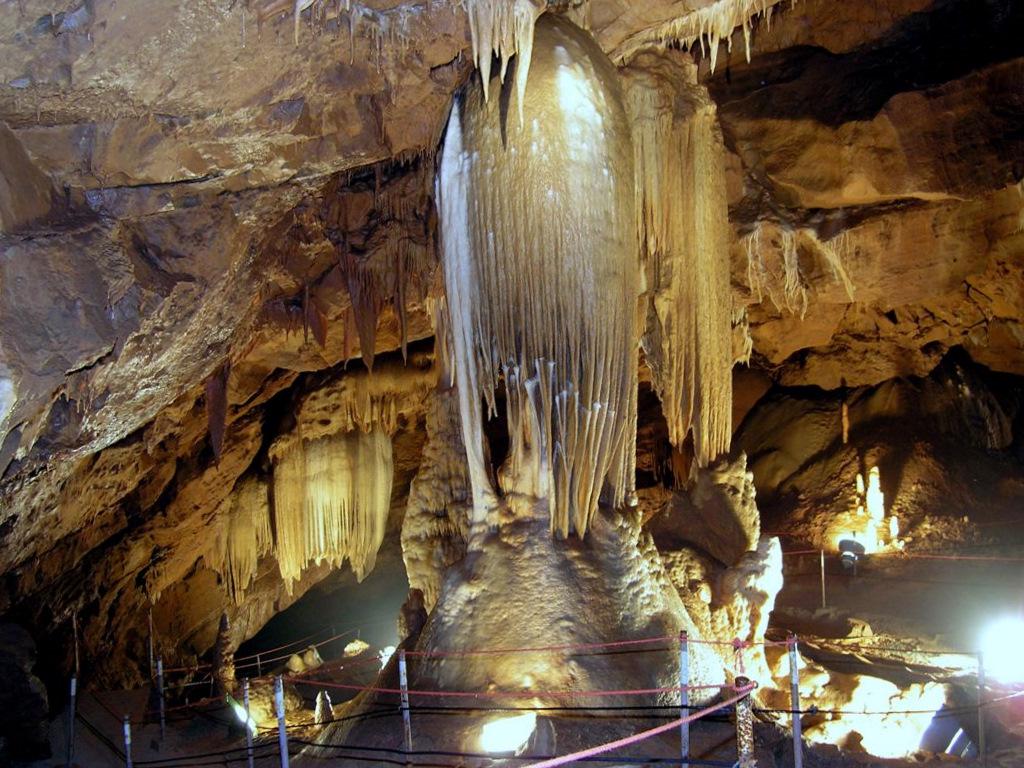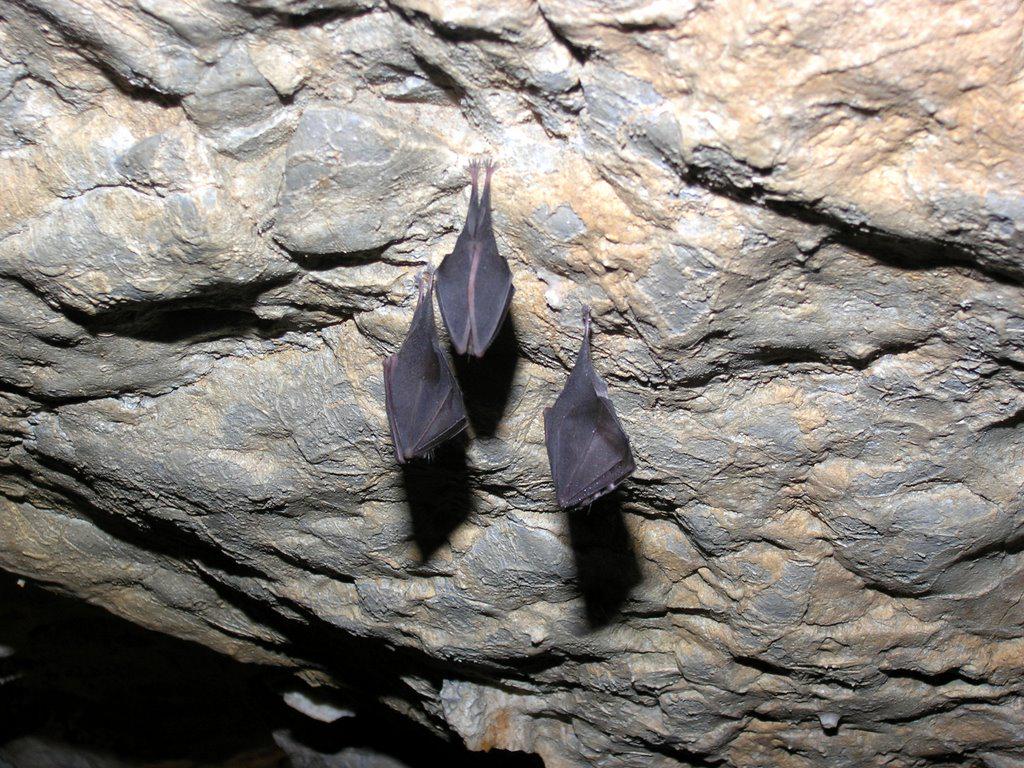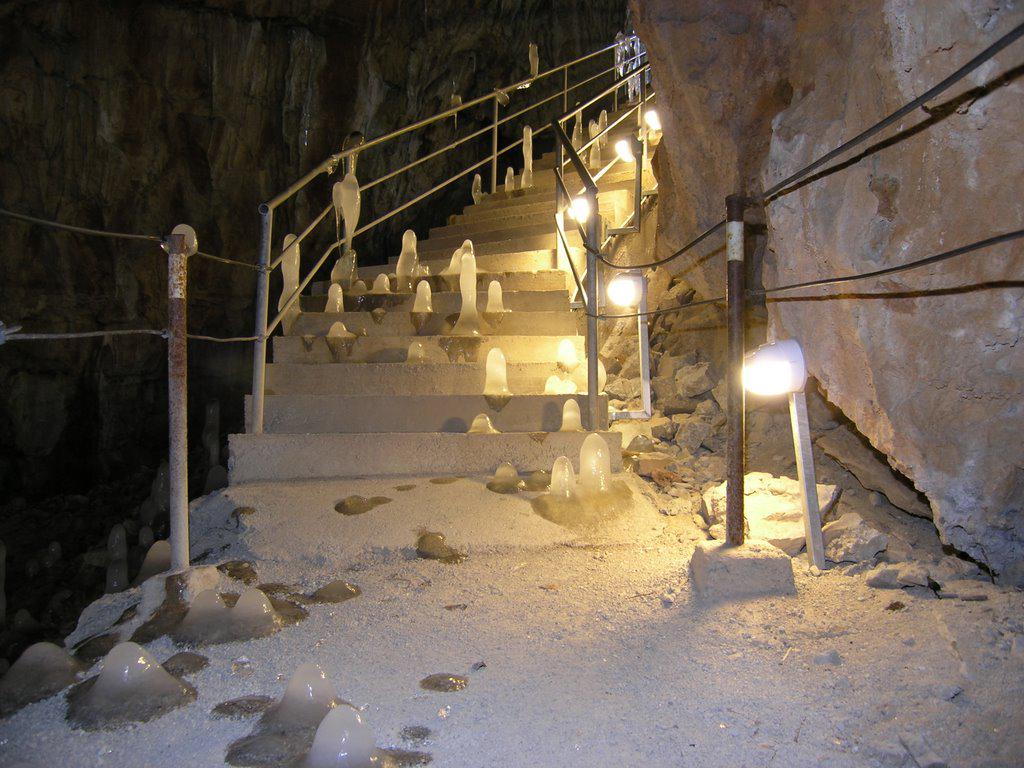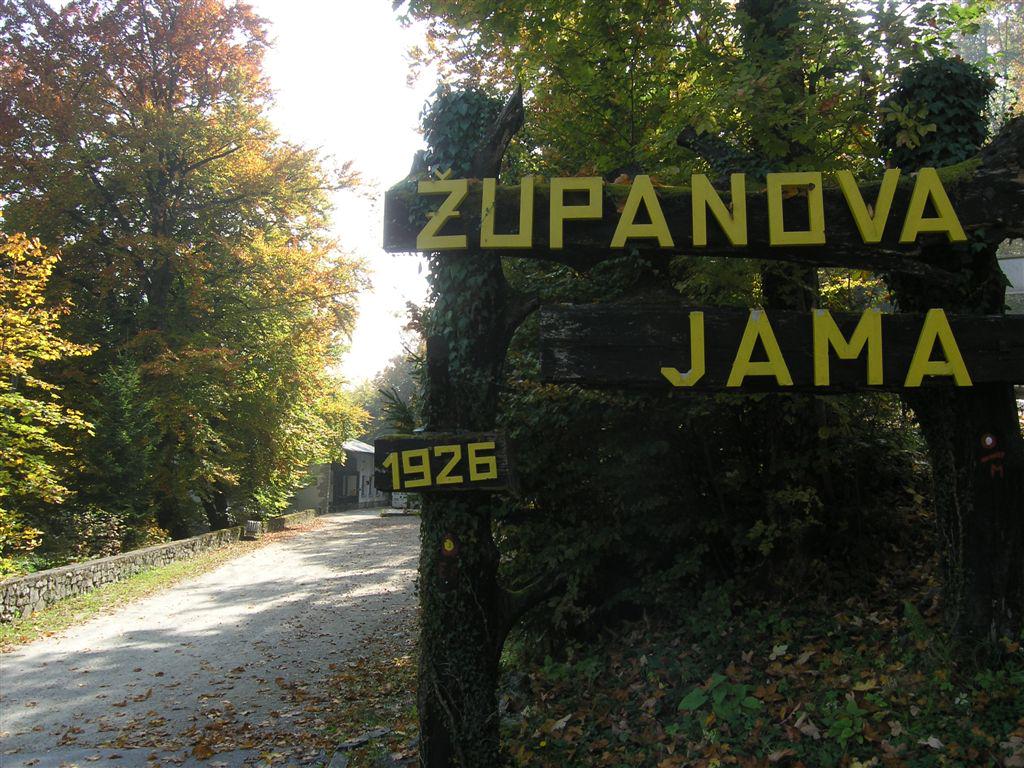
The Mayor's cave is located at the altitude of approximately 400 metres, while the normal level of the karstic groundwater in the northern edge of the Lower Carniolan Karst lies some 60 to 70 metres lower, therefore there is no running water in the cave at normal times. The sound of water can be heard in the cave only after heavy precipitations, when a great quantity of water trickles into the cave from the surface, the managers of the cave explained to us.
Water trickles through water permeable layers of rocks above the cave, and then drips along stalactites within the cave into hollows, and makes gurgling sounds. "Gurgling of water can be most distinctly heard in the Last hall, 35 metres below the surface. Before we reach the Last hall, there are some more points worth stopping for at least a couple of minutes: the little lake in the Silver Hall, and the genuine waterfall in the cave, at the end of the Matjaž's hall," they say, and continue that rain water continues its travel towards springs – into the Podlomščica creek, which together with the Grosupeljščica creek runs to the Radensko polje field.
The pearl of the Inner Carniola Karst
The Mayor's Cave is considered the underground pearl of the Inner Carniola Karst. It is located in the vicinity of Grosuplje, 8 km in the direction of Turjak, and it was named after Josip Perme, the then mayor of Šentjurij near Grosuplje, who discovered it in 1926.
Today you can enter the cave through the Ledenica chasm, 100 metres from the original entrance. The sightseeing takes approximately one hour, during which visitors pass through seven halls on the regulated 600 metres long path. All kinds and shapes of stalactites can be seen in the cave. The temperature in the cave is constant, 9.5 degrees Celsius, therefore it is pleasantly cool in summer, and warm in winter, according to the managers of the cave.
T. K. B., Foto: Marjan Trobec
Translated by G. K.




















































